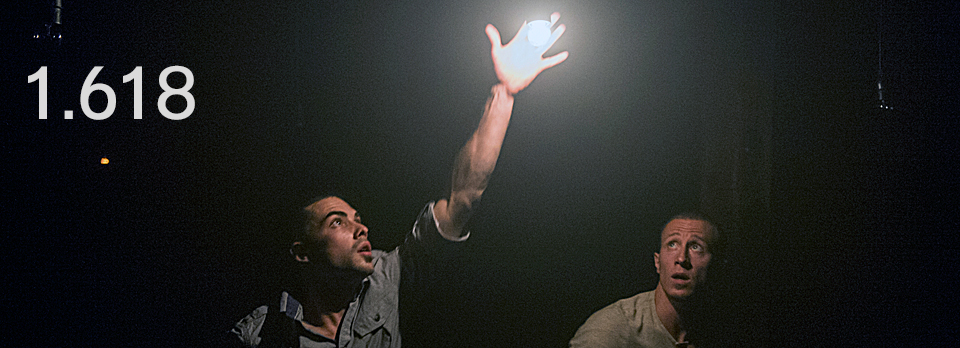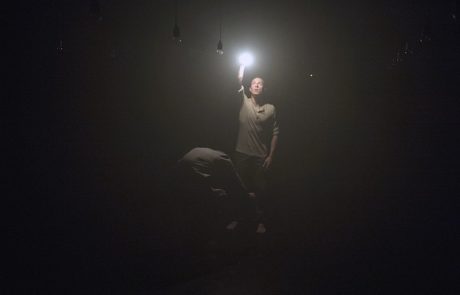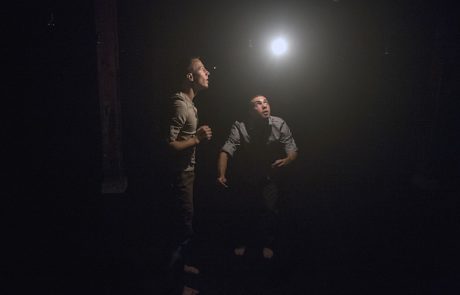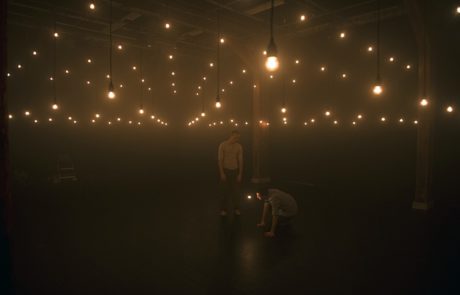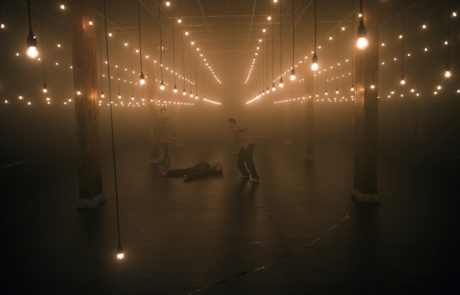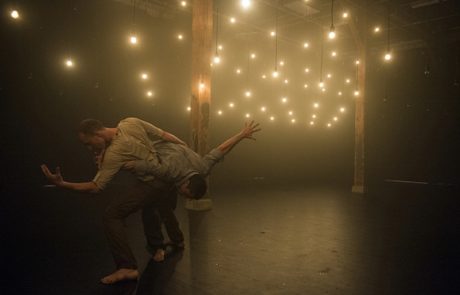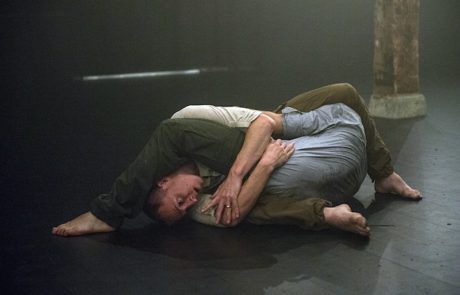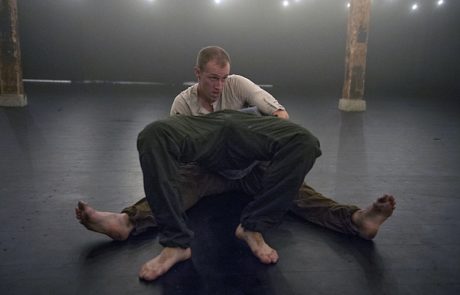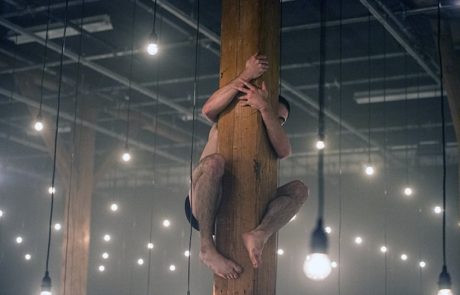The piece “The Golden Section” was created in collaboration with the light-designer Besim Morina for three performances produced by the “Zürcher Hochschule der Künste” (University of the Arts) at the “Theater der Künste” in Zürich, Switzerland. The golden section or golden mean is a system of proportion, which was invented in antique Greece in order to achieve perfect harmony and was used on the facades of temples and sculptured figures.
It is based on what was considered to the ideal relationship of 1 : 1.618.
Besim Morina laid the foundations for the choreography. In a darkened rectangular hall he had created a dynamic system structured by 377 light bulbs hanging in regular intervals from the ceiling. There was no barrier between the performers and the audience. The spectators took up whatever position they wanted to in the long hall and were also free to move around and interact with the performers.
When the audience was given access to the hall they were confronted by a dark and “misty” space dimly illuminated by the lamps placed according to the Golden Mean. In the centre one could just make out the two performers standing close together rather like antique statues. When the music began they started moving around the hall, pacing out its dimensions and relating this to their bodies.
Our basic idea was to represent what the Golden Section is actually all about: the striving for the ideal. This ideal however remains elusive, mostly unattainable. Consequently much in the piece was conceived to illustrate the contrast between chaos and even aggressivity and harmony, between real life and the idea of perfection. Chaos dominated and the moments of harmony were short and threatened. This was reflected in the music. In long passages it was irregular and disturbing, sometimes even violent. This corresponded with the movements. Then, seemingly like a ray of sunshine Bach’s “The art of the Fugue”* broke through and banished the chaos. It’s harmony and strict order seemed almost godlike. In such rare moments of bliss the performers were united and in a longer period their bodies almost welded together into one closed form, one „lump,“ their limbs so interlinked that it was hard to distinguish whom they belonged to. At one point the performers starts pulling down one of the small lamps from the ceiling and moved in, above and around it as though they were embracing it in a loving caress. Perhaps this single lamp symbolized the ideal which they were trying to reach and become part of. Another quite long sequence revealed the two performers in a frantic and desperate race to follow and catch up with another small lamp. They ran and ran on the spot until they collapsed, exhausted. But it was to no avail, the lamp remained unreachable. Towards the end of the performance the performers simply fetched members of the audience at random and began measuring their bodies. Would they correspond with the rules of the “golden section”? Finally almost the entire audience had been incorporated and measured. Placed into groups, arranged according to the Golden Mean, they remained frozen in these positions, almost like statues until the last notes of “The Art of The Fugue” died away.
* Some say that Bach used the golden mean in this composition.
Matthias Kass (choreographer & dancer)
Clément Bugnon (choreographer & dancer)
Besim Morina (light & stage-design)
Co-production: ZHdK (Zürcher Hochschule der Künste)

